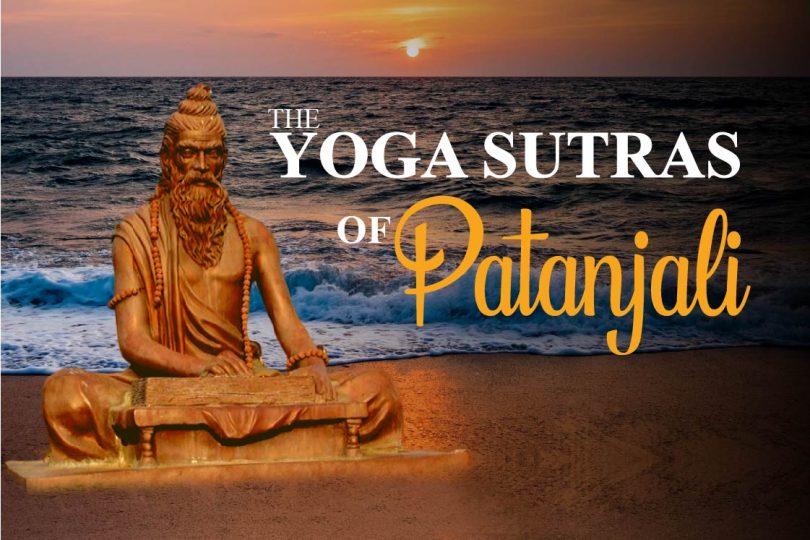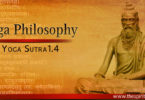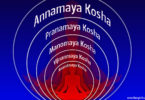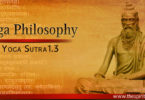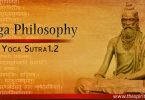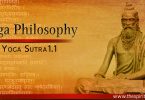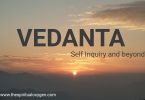Yoga sutra is considered one of the main authoritative scripture on the practice and philosophy of yoga. Although Yoga was already mentioned in various ancient scripture, including the Vedas, Upanishads, the Bhagavad Gita etc, but sage Patanjali collected all the unique teaching of these texts and compiled them into a single comprehensive unit called Yoga Sutra.
In the personal level I feel yoga sutra is not just philosophical text but also a psychological which able us to understand true spirituality. This book gives us a deeper insight on human mind to understand what is it, how does it work and what is beyond mind. For the yoga practitioners it is a must read because it will expand the understanding of yoga more than just Asana.
In the Indian system of knowledge, philosophy known as ‘Darshan’. There are six Ashtik Darshan known as six major orthodox schools of Indian philosophy, yoga philosophy is one the them.
It is important to know that system of yoga is based on Sankhya philosophy. Sankhya philosophy is regarded as one of the oldest philosophical system in India. Sankhya and yoga philosophy goes together as theory and practice to achieve Kaiwalya (absolute freedom).
The book is a set of 195 sutras (or some source says 196), which are short, terse phrases designed to be easy to memorize. In english sutra corresponds roughly to what we call aphorisms. The Yoga Sutras were compiled sometime between 500 BCE and 200 BCE. The sutras are divided into four chapters (pada) as follows.
Four chapters of Yoga Sutra
- Samadhi Pada: The first chapter in the Yoga Sutras of Patanjali is composed of around 51 sutras; first chapter provides a definition and the purpose of yoga. Various approaches that can be used to achieve the objectives of yoga are provided.
- Sadhana Pada: The second chapter is composed of 55 sutras, discuses the practical approach to achieving the goals of yoga. In this chapter the author gives a description of the eight limbs of yoga called Ashtanga Yoga, which is how the yoga sutras are sometimes referred to.
- Vibhuti Pada: The third chapter focuses on some of the supernatural powers that an adept yogi may be able to attain. This chapter begins from last three limbs of the eight-limbed path which is dharna (concentration), dhyana (meditation), Samadhi (dissolution or oneness) and then continues to talk about some other psychic abilities. This chapter contains 55 sutras.
- Kaivalya Pada: This chapter has 34 sutras. Topics like nature of the mind and mental perceptions, karma, three guna, bondage and liberation and what follows it are discussed.
Some recommended translations and commentaries
It would hardly take 1 hour or less to read the entire Yoga Sutra. However it may take whole life to understand the essence of these sutras. Surely we need someone to make us understand ancient texts included yoga sutra. From the first translation YOGABHASHYA by Ved Vyas till now there are number of translation available of Patanjali’s Yoga Sutra. Below this some recommended translations:
- Yoga Sutra of Patanjali by Swami Veda Bharti
- Light on yoga sutra by B.K.S Iyengar
- Four chapters on freedom by Swami Satyananda
- The yoga sutras of Patanjali by Swami Satchitananda
- Raja yoga by Swami Vivekananda
- The sutras of Patanjali by Edwin F Bryant
Who was sage Patanjali?
There is no exact information available about Sage Patanjali. According to some description available, Patanjali is said be as half snake and half human. Snake has been always associated with wisdom and spiritual awakening.
Mythologically, Patanjali is identified as human manifestation of the cosmic serpent called Shesha-naga. Also he is often considered a famous grammarian, also thought to have composed a work on Ayurveda.

